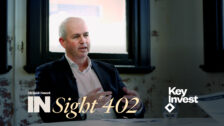The recession is over, where to now?
There are positive signs for the Australian economy following Wednesday’s third quarter GDP figure. It was a positive reading of 3.3% quarter on quarter, signalling a rebound in the economy is well underway. This marks the end to the pandemic led economic downturn and a gradual return to business normality.
It was a massive beat on consensus, with economists expecting just 2.5% quarter on quarter. A remarkable rebound from June quarter’s 7% contraction. An ANZ analyst said in a note “with another solid gain likely in Q4 and the growth outlook looking positive for 2021, GDP could be back to its pre-pandemic level sometime in 2021.”
Australia’s heavy handed lockdown laws were able to limit the spread of COVID-19, the Federal Government’s economic stimulus, record low interest rates and an increase in the RBA’s quantitative easing to $100 billion seem to have paid off. End the world predictions for the Australian economy were off the mark with predictions of an impending property collapse, shopping centre and retail wipe-out, and the death of office space all failing to materialise.
To add to the positive news, business confidence is returning with NAB’s business confidence index rising 9 points in October to +5. NAB chief economist Alan Oster said “Business conditions saw a marginal improvement in the month. Trading conditions and profitability continue to improve as the economy opens up. But employment continues to lag and is still negative, suggesting at face value there has been ongoing job shedding.”
Whilst out of recession, an economic return to pre-COVID levels will be a slow process as the Government gradually turns off the Coronavirus support taps and gets those affected back into labour force. The Government extended JobKeeper until March 28, 2021 but from September 28, eligibility was changed, and payments reduced. The rates will step down again from January 4. The knock-on effect from such a large number of unemployed Australians hitting the job market at once, is likely to cause a rise in mortgage defaults and put pressure on property price countering the RBA rate cutting effect. At record lows, the RBA does not expect to raise rates for the next three years at least.
A positive 3Q GDP figure confirms Australia’s exit from the pandemic driven recession. We now join only a handful of countries that have managed to come out of the pandemic in better shape than most defying IMF predictions that “Australia’s economy would likely be one of the worst-hit economies in the Asian region.” Australia is getting through this better than many might have been expecting, even with China’s long list of banned Australian imports. Much of the recovery so far has been driven by a rise in sentiment caused by the announcement of various COVID-19 vaccines. This sparked a surge in consumer and public spending.
Treasurer Josh Frydenberg said “fewer businesses relying on the payments showed the economy was bouncing back faster than expected.” Were it not for Victoria’s prolonged lockdown, economists say the GDP figure would have read closer to the 4%-5% mark? With only a month left of this calendar year, things aren’t all that bad.










